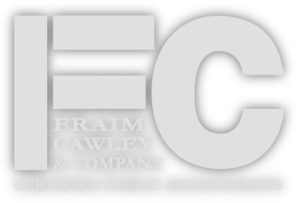Q: How do I determine a “reasonable salary” for my S-Corp?
A: Start with what you’d pay an unrelated employee to do your job, then adjust for profit, duties, time spent, and local market data. Pay at least that amount as W-2 wages; treat the rest of the profit as distributions. Too low invites IRS re-classification and payroll-tax penalties; too high erodes your S-Corp savings (in most cases).
TL;DR (big-picture)
- Think arm’s-length. What would you pay someone else – same role, hours, and location?
- IRS looks at nine factors (training, duties, time, market comps, dividends, etc.). No single formula controls.
- Three valuation methods: Market (most common), Income (ROI test), Cost (task-by-task). Use the one with the strongest evidence.
- Too low = re-class risk. Watson, Grey, and countless audits show the IRS will re-characterize lowball salaries.
- Too high costs you money. Extra payroll tax, lost QBI and PTET benefits – don’t overpay just to “be safe.”
- Document, document, document. Keep wage surveys, time logs, board minutes, and valuation memos on file.
One of the most common questions we get asked is some variation of “how much do I need to pay myself in salary?”
S-Corps can have tremendous tax benefits, but one of the requirements is that officers providing services give themselves a “reasonable” salary.
But what exactly constitutes reasonable? How do you determine what that is? What factors go into it?
Getting this number right is really important. Too low and you run the risk of IRS scrutiny, distributions being reclassified as wages, and paying significant penalties. Too high and you may lose the entire benefit of being an S-Corp: by paying unnecessary payroll taxes, by losing the benefit of the Qualified Business Income Deduction, and by losing the benefit of the Pass-Through Entity Tax Election (PTET).
Initial Factors to Consider
As a sanity check, there are three initial criteria we advise clients to consider:
- The job being performed. A dermatologist is going to have a higher minimum pay than a painter will
- The geographic region. If you live in NYC, the market rate is going to be higher than if you live in a rural area with more depressed wages
- The amount of profit in the business. Some painters might only earn $30k annually, but if you own a painting company that is clearing $2 million, a $30k salary is not going to seem reasonable
- Conversely, imagine you were a dermatologist, but your business somehow only made $50k profit. Even if the average dermatologist in your area makes $300k, the IRS is not going to require you to pay yourself a $300k salary. Profit factors into both scenarios
Taking those factors into consideration will get you a long way and will help keep you out of trouble. But as you’ll see throughout this article, it gets much more complex than that and there are multiple ways you can approach a reasonable salary calculation.
Fair warning from the start: this article is DENSE. And that’s saying something coming from a CPA. But there wasn’t much way around it to cover the topic properly. If your eyes start glazing over as you read this, we also created this brief summary of the article.

Factors the IRS Considers
There’s no formula that the IRS uses/a published calculation taxpayers can use to determine their salary. So – for better or for worse – this ends up being an area that is more art than science.
But there are factors that the IRS and courts have consistently looked at in evaluating the reasonableness of salaries. It’s important to understand these factors and determine if you are paying yourself a reasonable salary or not. If you are not, then the IRS can recategorize up to the entirety of your distributions as wages – costing you significant amounts of payroll taxes in addition to penalties.
In FS 2008-25, the IRS provides a list of “some factors considered by the courts in determining reasonable compensation” (emphasis ours). These were:
- “Training and experience
- Duties and responsibilities
- Time and effort devoted to the business
- Dividend history
- Payments to non-shareholder employees
- Timing and manner of paying bonuses to key people
- What comparable businesses pay for similar services
- Compensation agreements
- The use of a formula to determine compensation”
Note: we emphasized the “some” in that list because the IRS is typically loath to provide exhaustive lists for any sort of analysis (other examples of this include independent contractor vs. employee determinations and the look-through analysis on if NFTs should be taxed as collectibles). This list of factors is very helpful, but cannot be used to the exclusion of other potential factors.
The basic idea is trying to determine what a non-shareholder employee would be paid for comparable work. In a true arm’s length transaction, what would you have to pay someone else to do the same work? The time spent, expertise required to perform the job, and the tasks you’re required to complete all factor into this. How much are you paying your employees compared to yourself? And if your proportion of W-2 wages to distributions/dividends is unreasonably skewed or your methodology for determining your salary seems haphazard and without any formula or basis, that also works against you in the event of an audit.

Methods Used to Determine Reasonable Compensation
In the Reasonable Compensation Job Aid for IRS Valuation Professionals, the IRS gives three methods for determining reasonable compensation:
- The Market Approach. This method looks at the compensation of employees in similar roles/performing similar duties at similar companies
- The Income Approach. This method is based on the independent investor test – basically if a third-party investor would be satisfied with the rate of return on their capital
- This test is used in a lot of areas in tax and finance, but for this exercise the idea is that too high of a rate of return means that the wages are too low. Lower officer wages = higher profits. If the ROI becomes too high, it’s an indication to the IRS that wages are being disguised as dividends
- The Cost Approach. This approach looks at the individual tasks the owner is performing. The job is broken into components and the amount of time spent on each task is calculated. From there, market data is “used to determine the “cost” of each job duty performed by the employee. These are added up to arrive at a total “cost” to replace the duties/services of the employee.”
All of these methods have limitations. Lack of public data (especially for smaller companies) hinders the Market Approach. The Income Approach is predicated on determining the Fair Market Value of a company (which is then used to determine the rate of return) and valuations can be costly and at times somewhat subjective. The Cost Approach can be laborious and given that it relies on self-reporting can sometimes be inaccurate or prone to some degree of bias.
While IRS auditors are required to consider all three methods, the IRS favors the market approach the most. They note that:
“Although standard appraisal practice requires the consideration of all three approaches, the reconciliation in the case of Reasonable Compensation will generally rest heavily on the market approach (comparison to compensation for similar positions in similar companies). The income and cost approaches, as well as financial analysis, are then used to refine the reasonable compensation amount.”
This is not to say that you cannot or should not use the other approaches in determining your compensation nor that the market approach absolutely controls. But if your compensation is materially different than market comps, understand that this is a hurdle you will have to overcome and a variance you will need to be able to justify.

Consequences of Underpayment
The main risk you run with an unreasonably low salary is that the IRS will recategorize distributions as wages.
This is what happened in Joseph M. Grey, Public Accountant, P.C. v. Commissioner, 119 T.C. 121 (2002). Joseph Grey was the sole shareholder of his CPA practice. Despite providing significant services for the business, for two years he did not pay himself any salary and instead took distributions. The court recategorized the entirety of his distributions as wages.
But just paying yourself something will not save you from scrutiny. David E. Watson, P.C. v. United States, 668 F.3d 1008 (8th Cir. 2012) had a similar outcome. David Watson was a CPA and owned his 25% interest in a larger CPA firm through his S-Corp. The larger CPA firm paid his S-Corp distributions of $203,651 in 2002 and $175,470 in 2003. Despite this, he only paid himself a $24,000 salary. The court agreed that this was unreasonably low and determined a reasonable salary for Watson’s accounting services was $91,044. They recategorized the $67,044 difference as wages subject to payroll taxes.
Resist the Temptation to Overpay Wages
With all of this talk of the risks associated with underpaying yourself, there may be a temptation to overcorrect and pay yourself an unnecessarily high salary. You don’t want any IRS scrutiny or to pay penalties, after all.
Better to be safe…right?
Not necessarily. There are risks you run by overpaying yourself.
As an example, years ago we had someone come to us who paid themselves an $80k salary – I believe because they googled how much a comparable role would pay. But that year the business had an $80k loss. Before their salary, the business broke even. So the business did not have any profit to be able to pay anything.
But because they wanted to be “safe”, they cost themselves ~$12k in unnecessary payroll taxes.
And for profitable companies, overpaying wages also reduces your 20% QBI deduction and your ability to utilize the PTET. Especially for very high earners, this can cost you tens or even hundreds of thousands of dollars.
The important thing here is to pay yourself an appropriate salary.

Inflated Wages Are Not the IRS’s Desire
Beyond being costly, unnecessarily high wages are not even what the IRS requires.
Let’s think about why the IRS has a reasonable compensation rule to begin with. If you were taxed as a sole proprietorship, every bit of profit from your business would be subject to self-employment tax (both sides of Social Security and Medicare). But with an S-Corp, only the salary you pay yourself is subject to Social Security and Medicare – distributions bypass this fee.
So artificially low wages means that you aren’t paying all of the tax the IRS thinks you should be.
The IRS’s reasonable salary rule is designed to prevent S-Corp owners from avoiding Social Security and Medicare taxes by disguising their labor income as distributions. The purpose of these rules is to ensure appropriate payroll taxes are collected – not to punish business owners whose companies have low profits.
Technically, the IRS requires that owners who perform services for their business pay themselves fair market compensation, regardless of profitability. Cases like Joseph M. Grey Public Accountant, P.C. v. Commissioner (cited earlier) have reinforced this by holding that salary must be paid when services are performed, even if the business is struggling.
However, in practice, IRS enforcement recognizes that an S-Corporation owner should not be expected to pay wages that exceed the company’s net available income. If a business earns only $50,000 in total profit, it would not make sense – and would not be required – for the owner to take a $500,000 salary just because their profession would normally command that rate. Doing so would result in more Social Security and Medicare taxes than a sole proprietor with the same earnings would owe, defeating the purpose of the rule.
And this is reinforced by IRS guidance and court cases. FS 2008-25 states that “The amount of the compensation will never exceed the amount received by the shareholder either directly or indirectly.” This means the IRS won’t attempt to recharacterize more than the total amount actually paid to the shareholder – whether as wages or distributions.
The Joseph Grey case is an excellent example of this. His profit was only $33,196 in 1995 and $24,990 in 1996. Even in the 90s, that was well below what the average CPA would have been making.
But the IRS did not require that he be paid an amount higher than those profit levels/somehow true-up to what the average CPA would have been paid. He just had to pay payroll taxes on the profit itself.
But again: that’s in no way to say that you need to overpay or pay the entirety of your profits as W-2. Profit is the maximum amount that can be reclassified.

Cases Where Courts Have Sided With Taxpayers
And the courts do not always side with the IRS – at least not fully.
In Sean McAlary Ltd, Inc. v. Commissioner, TC Summary Opinion 2013-62, the taxpayer had profits of $231,454 but paid himself no salary. The IRS proposed a salary of $100,755. The court adjusted the salary down to $83,200, which still allowed $148,254 of income not subject to Social Security or Medicare.
In Davis v. United States, 1994 U.S. Dist. LEXIS 10725 (D. Colo. 1994), the taxpayers were able to get the IRS’s proposed assessment of $39,221 down to $647. The IRS attempted to categorize all loan repayments and dividends as wages. The court disagreed. They found that:
- While Mr. Adams was listed as the company president, this was in name only. He worked for other companies during those years and provided no substantial services to the company and was therefore not an employee
- The court’s ruling on this portion was especially pointed. It said that the government’s position was “arbitrary and capricious, and without any basis in law or fact. The government’s position as to Mr. Adams was not, and is not, substantially justified.”
- Davis was an employee, but only spent about 12 hours per month providing services. Given this, the majority of payments to her were not wages either
- The company “did not have sufficient working capital at times during the 1987-1989 time period. It was necessary from time to time, therefore, for Ms. Davis and Mr. Adams to transfer money from their personal funds to pay Mile High’s operating expenses.” When the money was repaid, it was for legitimate loan repayments, not wage payments as the IRS claimed
In Goldsmith v. Commissioner, T.C. Memo. 2017-20, the taxpayer was an attorney who ran into horrific financial troubles (his firm worked on contingency cases and he was unable to manage the cashflow challenges, leading him to predatory loans and financial ruin). He actually ended up going to prison for 33 months for failure to pay his income taxes and failure to remit taxes withheld from his employees’ paychecks.
After he was released from prison, he faced a civil audit where – in part – the IRS attempted to reclassify loan repayments and returns of capital as wages.
The case is peculiar in how atrocious the accounting records were and how intermingled personal and business funds were – to the point that Goldsmith “didn’t even keep company funds in a corporate account.” Various personal loans were also – according to the taxpayer – taken out to repay business loans. The entire thing was an unmitigated disaster.
The court ruled against Goldsmith in a number of areas, but also ruled for him in others. Specifically, in the “attributed wages” section of their ruling they stated that:
“The Commissioner asserts that because Mr. Goldsmith was an employee of G&A (a fact Mr. Goldsmith conceded during trial) payments made from G&A to him during the years at issue are constructive wages, which would make G&A owe more in payroll tax and Mr. Goldsmith owe more in income tax. Mr. Goldsmith argues that because during those years G&A made no money, it could not have afforded to pay him wages, and any money he took out of G&A was to reimburse him for G&A expenses he himself had paid earlier.
We are very skeptical of the Commissioner’s work on this issue. The employee-tax agent assigned to Mr. Goldsmith’s case used statistics from the Minnesota Bureau of Labor to find the average salary of attorneys working in the Twin Cities for the years at issue. She then looked at G&A’s records and determined that because Mr. Goldsmith was billing time, and G&A was paying him, G&A must have been paying him wages. The first problem here is that the agent did not take into account any loans Mr. Goldsmith made to G&A. We also saw no indication that she considered G&A’s operating expenses or whether she even asked herself if she had all the information necessary to make her determination. She admitted that “with [her] experience now, [she] would have taken [expenses and loans] into much more consideration,” and that since then she’s learned a lot more.
There’s no rule that an S corporation has to pay its sole shareholder a wage, especially when it’s bleeding money the way G&A did. The real question is one of fact–were the payments a return of capital, repayments of loans, or wages?
There’s a multiprong test for this, but we stick to the prongs most likely to implicate the facts we have. To guide us, we have the benefit of Scott Singer Installations, which featured some freakishly similar facts. As did Mr. Goldsmith, Mr. Singer raised money for his business from the equity in his home. When he ran out of equity and was unable to continue borrowing from commercial banks, he began borrowing from family members and lending it to his corporation. Mr. Singer may have wanted this to create a debtor-creditor relationship with his corporation, but we held that these infusions of capital would be loans only if Mr. Singer reasonably expected to be repaid. For the years the business was strong, we found Mr. Singer had a reasonable expectation of repayment. But, when business dropped off, and Mr. Singer was forced to seek help from nontraditional lenders, he had no reasonable expectation of repayment.
It’s the same here. Mr. Goldsmith sought funding for G&A from usurers because reasonable creditors would not finance the firm. Even during the earlier years when he was able to use equity in his home to fund G&A, the business was running at a deficit. From 1997 through 2002 G&A had only one profitable year–2000, the year of the large contingent fee. Even with that fee, however, G&A was still failing–as shown by the losses in the following years and Mr. Goldsmith’s own acknowledgment. For these reasons we find that payments that G&A made to Mr. Goldsmith were not wages, as the Commissioner asserts, and were not reimbursements for expenses as Mr. Goldsmith insists, but rather were a nontaxable return of capital to the extent of his basis.”
But it is important to note that these cases are the exception rather than the rule. The courts largely side with the IRS in these cases, so you’re much better off ensuring your salary is reasonable and justifiable from the start.

Highly Profitable Companies with Minimal Assets
As you can see from all of this, every situation is different and the appropriate salary will vary with it.
But we did want to touch on one specific scenario: companies with very high profits but minimal capital assets.
The Income Approach in determining reasonable compensation is often used for capital heavy businesses (like manufacturing) because you are breaking out the cost of the shareholder’s labor from a reasonable rate of return on their capital investment.
In businesses where that is not the case, the temptation will be to assume that the majority of the profit is derived from the shareholder’s labor. And that may be true in many cases.
But it’s not always true.
An exception to this can be brand-driven businesses. These companies are not capital intensive, but do not necessarily require significant amounts of labor from the owner. In some cases, the owner labor is minimal.
How would those businesses be viewed?
In those cases, you could attempt to take the same approach you normally do with the Income Approach but adjust it to define “capital” more broadly for the return on capital calculation. You would argue that the intangible capital/assets of the brand are included in this calculation.
As an example, let’s say your business profit is $800k and with no tangible assets. But you estimate that your brand equity is $2 million. It is not unreasonable to expect a reasonable rate of return on that brand equity. For this hypothetical, let’s say that is 15%. That would be $300k of the profit that could be attributed to the brand equity. That would strengthen your position and justification for a lower salary – especially if you are able to show lower amounts of involvement.
And as we’ve noted multiple times throughout this article, an optimized salary can result in significant tax savings. But there needs to be a reasonable justification.
Conclusion
This is a dense, complex topic. There is no way around it. But make sure you understand the risks and are consulting with your CPA to come up with a reasonable, appropriate salary from your S-Corp. The wrong amount – both too high or too low – can prove costly.
FAQ
What factors does the IRS use to judge “reasonable”?
Training and experience, duties, hours, profit level, dividend history, market wages for similar roles, and any written compensation agreement (IRS FS 2008-25).
What happens if my salary is too low?
The IRS can re-class distributions as wages, assess back payroll tax, add 20% accuracy penalties, and charge interest – see Watson and Joseph Grey.
Is overpaying salary a safe workaround?
No. Excess wages add unnecessary Social Security/Medicare tax and reduce your 20% QBI and PTET benefits. Aim for fair, not inflated.
Which method should I use – Market, Income, or Cost?
The IRS prefers the Market Approach (comparable wages). Use Income or Cost only when market data is weak and you can defend the numbers.
How do I prove my number in an audit?
Keep compensation surveys (BLS, Radford, RCReports), time sheets, board minutes approving salary, and any valuation reports used for the Income or Cost approaches.
Any accounting, business, or tax advice contained in this communication, including attachments and enclosures, is not intended as a thorough, in-depth analysis of specific issues, nor a substitute for a formal opinion, nor is it sufficient to avoid tax-related penalties.




